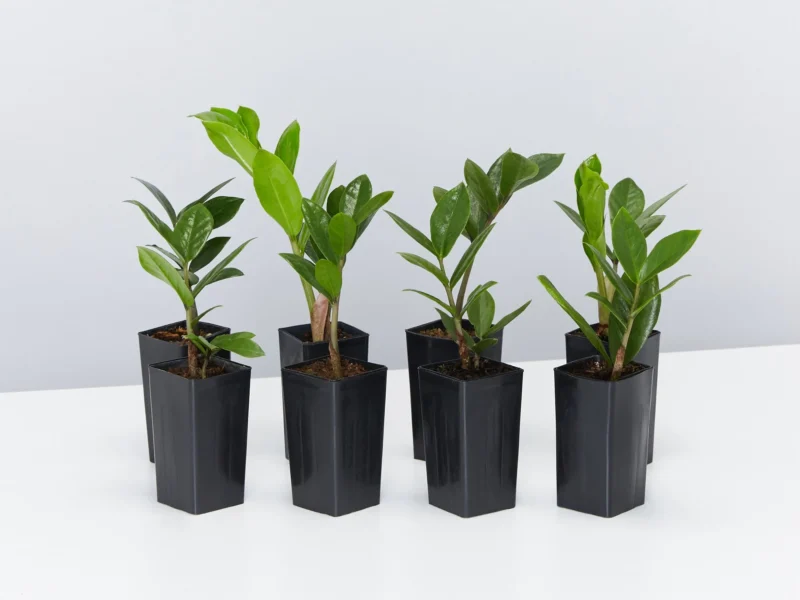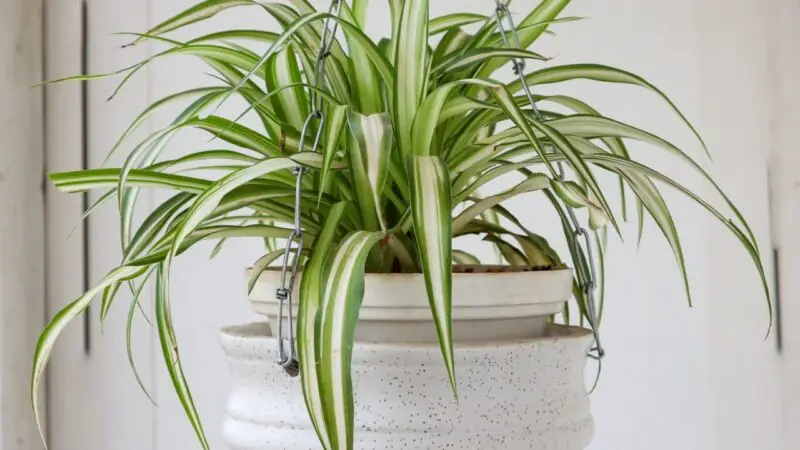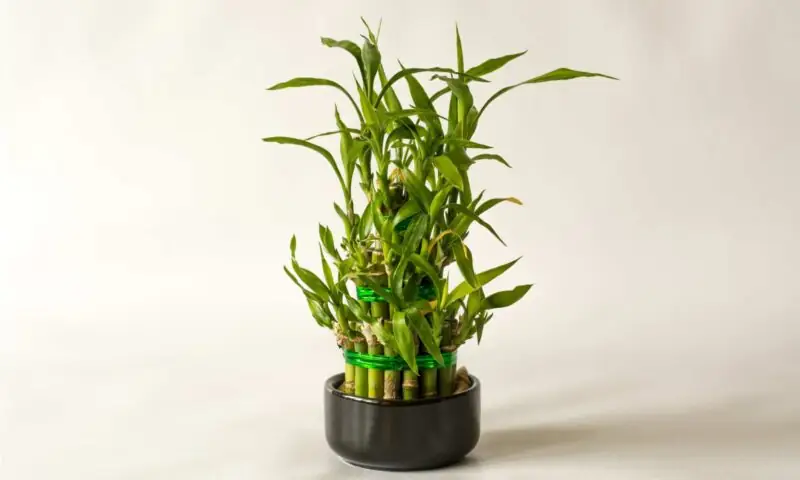14 Best Plants for an Office with No Windows: Enliven Your Office Desk

Are you tired of working in an office space that feels dull and lifeless? Want to know what are the best plant for an office with no windows?
In this article, you will find the best plants for office spaces with fluorescent lights. A lot of people these days spend more time at the office than at home, so it is important that you create a truly homey atmosphere there. You can be absolutely sure that all these plants will thrive without much natural light: make your office your true second home!
Importance of Indoor Plants in Office Spaces
Indoor air quality can be worse than outdoor air quality if proper ventilation or filtration systems are not set up within buildings. However, many studies (including one from NASA) have shown that indoor plants help purify the air through photosynthesis – taking CO2 from people’s breaths and converting it into oxygen.
In addition to improving air quality in enclosed spaces like office buildings or home offices, having greenery around – even little plants – reduces stress levels and increases productivity, according to research from various universities such as Texas A&M University. So, house plants are really a must for your office desk with no windows!
Challenges of Growing Plants in Windowless Offices
Growing indoor plants can be challenging without windows providing natural sunlight, which most houseplants need for growth. The key challenge is replicating adequate lighting conditions while maintaining optimal humidity and temperature ranges for healthy plant growth cycles.
Factors to Consider for Selecting the Best Indoor Plants for Windowless Offices:
When choosing low-light tolerant species designed for artificial light environments, consider these factors to ensure the plants thrive without causing undue stress over time:
Light Requirements
The specific characteristics of each plant species determine how much light is needed. In general, best plants for a windowless office are those that require little light and can survive artificial lighting.
Humidity and Temperature
Humidity levels in most offices tend to fluctuate throughout the day, making it essential to find species that can tolerate changing humidity ranges. Additionally, since there’s often little control over heating and cooling units within workspaces, select plants that don’t mind temperature fluctuations: not all tropical plants will be a good choice.
Maintenance and Care
Succulents or cacti may seem like a smart choice if you’re searching for low-maintenance plants to grow on your desk; however, not all areas offer the perfect growing conditions necessary to keep them alive and healthy over the long term (such as lack of bright light). Schedules for fertilization and the amount of water each species need are further considerations.
Top Low-Light Plants That Will Do Well in an Office
Here are some specific houseplants that fit perfectly into office environments without any natural light sources:
Snake Plant (Dracaena Trifasciata)

This hardy plant grows tall with vertical leaves, making it great for decoration while requiring minimal care. An absolutely ideal choice for low light situations!
Care & Maintenance: It needs little water, so occasional watering is sufficient – usually once every three weeks during winter months and slightly more often if A/C usage increases during hot summer months.
ZZ Plant (Zamioculcas Zamiifolia)

The ZZ plant emits tropical sensations with no maintenance thanks to its strong stems that are bent upward and bearing numerous glossy-green leaf clusters above each stalk.
Indirect light is ideal for this plant (in fact, ZZ plants thrive in low light), so make sure the soil dries out between waterings to prevent root rot.
Spider Plant (Chlorophytum Comosum)

This indoor plant produces white flowers and has long, thin leaves that arch downward. Spider plants are an excellent option for businesses with little ventilation because they are excellent at cleansing the air by eliminating toxins like formaldehyde, carbon monoxide, or benzene.
Care & Maintenance: Place the soil somewhere with bright, indirect sunshine, and keep it moist but not soggy.
Epipremnum Aureum, or Pothos

Pothos are well-known for their heart-shaped leaves, which have variegated patterns in colors ranging from dark green to silver-white.
Pothos are extremely low-maintenance plants that just require sporadic watering. They work well in artificial illumination settings as well, making them ideal for businesses without windows.
Spathiphyllum, or Peace Lily

The peace lily is one of the easiest indoor plants to take care of and produces lovely white blossoms. All they need is occasional watering throughout the month to survive indoors.
Care & Maintenance: Give the peace lily a once-per-two-week watering, and make sure the potting soil you choose contains peat moss or perlite because these materials assist plants in retaining moisture over time.
Chinese Evergreen (Aglaonema)

These tropical houseplants come in varieties featuring striking variegated leaf colors, such as silvery hues mixed with deep greens.
Care & Maintenance: Chinese evergreens prefer slightly warmer temperatures, ideally within the range of 70-80 degrees Fahrenheit. Position them far away from any direct drafts coming through nearby doors or windows.
Cast Iron Plant (Aspidistra Elatior)

The cast iron plant gets its name from its tough nature – it thrives on neglect! This species grows slowly, so there will hardly be any need for pruning compared to other quicker-growing options.
Care & Maintenance: Water the cast iron plant once every two weeks or so, and keep it in a spot with indirect light.
Prayer Plant (Maranta Leuconeura)

The prayer plant’s foliage is unique, featuring dark green leaves with red veins running through them, creating an eye-catching display wherever it is placed.
Care & Maintenance: Keep the soil moist but not too wet, as over-watering can lead to root rot. Place the plant somewhere with plenty of bright, indirect sunlight.
Bromeliads (Bromeliaceae)

These exotic-looking species come from tropical regions and are sure to add some color to your workspace environment!
Care & Maintenance: Bromeliads prefer brighter lighting conditions than most low-light tolerant options mentioned earlier. Placing them near windowed areas or other natural light sources should help ensure proper growth rates.
Air Plant (Tillandsia)

Air plants have no real roots, allowing owners to be creative with their placement options around the office space without worrying about soil messes.
Care & Maintenance: Submerge air plants in water once per week, then let them dry out completely before returning them to their designated location within the workspace.
Now that you have a list of suitable plants for windowless offices, remember to provide them with the necessary care and attention, such as artificial lighting, proper watering, and fertilization. With the right selection of plants and proper care, your office can become a healthier, more vibrant, and enjoyable environment for everyone.
Best Desk Plants for Windowless Office Spaces
In addition to floor-standing potting containers, small desk-sized potted arrangements can make excellent choices as well:
Lucky Bamboo

Lucky bamboo is perfect if you’re looking for something low-maintenance and easy to care for.
Description and benefits: Lucky bamboo comes in stalks shaped like spirals that look great on desks, providing good luck vibes all around.
Care and maintenance: Simply change its water supply weekly and keep it away from any direct sunlight source nearby.
Peperomia (Peperomia Obtusifolia)

Peperomia plants with their thick waxy leaves, make great desk plant options.
Description and benefits: They come in shades of green or variegated leaves with red, pink, or white edges. These plants thrive well under low light conditions, making them an absolutely perfect choice of plants for your office!
Care & Maintenance: Water them only once the soil dries up between watering cycles.
Parlor Palm (Chamaedorea Elegans)

Parlor palms are great if you’re looking for a tropical vibe around your office space – they feature thin arching fronds that look amazing on top of desks.
Description and benefits: Parlor palms can grow quite tall, so make sure they’re placed somewhere with enough room to stretch vertically upward!
Care & Maintenance: Keep the soil moist but not too wet, watering it only one week after checking its moisture level frequently over time.
Lady Palm (Rhapis Excelsa)

Lady Palms have deep-green foliage that looks beautiful alongside other types of indoor houseplants.
Description and Benefits: The fronds fan outwards, making it an ideal choice as a centerpiece arrangement atop tables or desks within workspaces. Lady Palms are really one of the easiest plants to care for: all they need is occasional watering every two weeks or so. Some people even go as far as to call them unkillable plants.
Care & Maintenance: Keep this species away from any direct sunlight sources nearby.
Tips For Maximizing Plant Growth In Offices Without Windows:
Here are some helpful tips when trying to get the most from office plants without windows:
Artificial Lighting Options
If natural light isn’t available, consider using artificial lighting options like compact fluorescent bulbs, which simulate daylight color temperatures needed by most indoor plant life forms.
Regularly Rotating Plants
Rotate plants to give each side equal exposure to lighting at different times. This will help ensure adequate growth rates, especially during winter months when less natural light is present outdoors.
Fertilization And Watering Schedule
Ensure each unique species has its specific fertilization scheduling needs met, as not all greenery requires the same nutrient feed mixes. Keep watering schedules in mind when setting up your ideal plant care routine.
Plants to Avoid In an Office Without Windows:
Avoid these types of plants if you work within a windowless office environment:
Succulents
Succulents are typically found in arid regions where they thrive on low water requirements. They need plenty of sunlight for photosynthesis.
Cacti
Cacti also come from dry desert-like areas and require lots of natural light sources, like succulents.
Highly Variegated Plants
Highly variegated plants should be avoided in offices without windows, as they require more light than what is available in a windowless office setting.
Examples include croton (Codiaeum variegatum), Dracaena ‘Limelight’, gold dust dracaena (Dracaena surculose), and Aglaonema ‘Silver Queen,’ among others.
Flowering Plants
Flowering indoor plants require lots of sunshine, as flowering involves photosynthesis. Only consider these plants if there’s enough natural light in the office.
Conclusion
It doesn’t have to be difficult to select the best indoor plants for an office with no windows. You can create a green and healthy environment in your windowless workstation with our collection of low-light plants. When choosing the ideal plant for your location, keep things like lighting needs, humidity levels, care, and upkeep in mind.